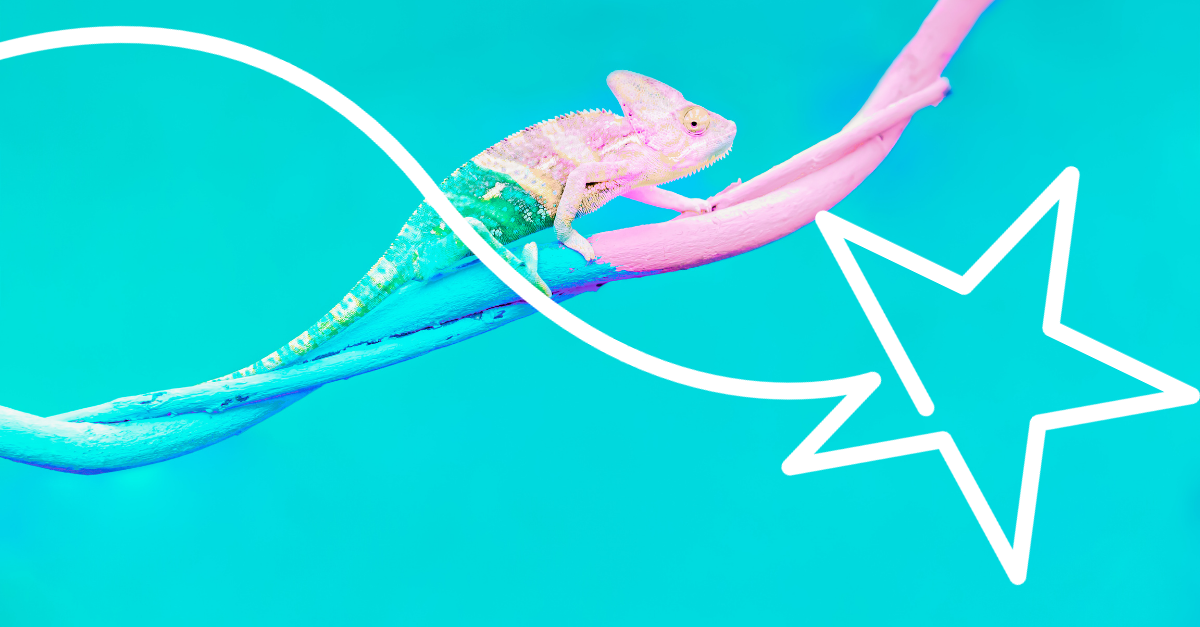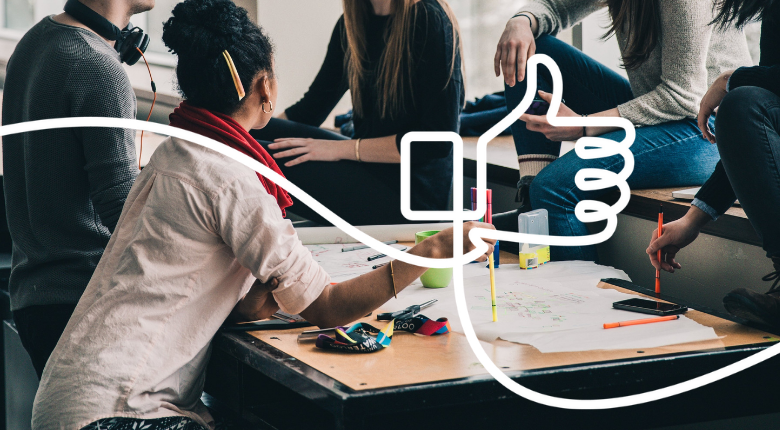October’s the month for rebirths.
Just look at the cinema releases: audiences there’s the return of a more feminist Bond in No Time To Die, that unshakable Michael Myers in Halloween Kills and a young Tony Soprano in The Many Saints of Newark.
it doesn’t seem to matter how many times these characters rise from the ashes, they’ll always resonate with audiences - as long as they move with the times.
But the rebirth tale doesn’t just work in film and literature. For years, brands have taken their cues from the 180-degree turns of baddies like Ebeneezer Scrooge and Darth Vader.
Because the best characters aren’t black and white - they’re relatable. And their stories? Well, they’re infinitely more compelling with a good old fashioned redemption arc.
The subtext behind the story...
According to Booker in his, erm, book: The Seven Basic Plots: Why We Tell Stories, the rebirth is one of a select few tales that’s been told over and over throughout the generations. The plotline goes something like this:
The young hero or heroine falls under a dark power.
- For a while, all appears well and the threat seems to have vanished.
- But it returns in full force and the hero/heroine is imprisoned in a state of living death.
- This continues for a long time; the dark power looking like it’s triumphed.
- Finally, comes a miraculous redemption: the rebirth.
OK, this is all fair and well in popular culture but it should come with a caveat for brands. Because customer first impressions aren’t fiction; these invaluable perceptions are based solely on reality.
The primacy effect & problems with born-agains
Cited in his book The Choice Factory, Richard Shotton ran an experiment based on a 70-year-old theory called the primacy effect.
He told 500 consumers about a fictitious brand, Black Sheep Vodka, that was supposedly about to launch in the UK. Half the participants were told the vodka was:
- Award-winning
- Refreshing
- Satisfying
- Vinegary
- Weak
And the other 250 people saw the list in this order:
- Weak
- Vinegary
- Satisfying
- Refreshing
- Award-winning
Well, guess what happened?
When consumers heard the positives first they rated the vodka 11% higher.
Good to know. But if this theory applies to brands as well as the products they’re selling, it does pose a problem for rebirths
“Once initial impressions have been formed they’re hard to overturn as subsequent impressions are interpreted through them,” said Shotton.
The problem is “...if they generate negative impressions early on then their later communications will struggle to overturn them,” he argues.
So who got it right? And more importantly, how did they do it?
The subtle, shapeshifting streamer: Netflix
Incredibly, Netflix is responsible for about 15% of the world’s bandwidth. And with over 200 million subscribers, it’s hard to imagine a world where the streaming platform doesn’t exist.
%20(400%20x%20300%20px)%20(4).png?width=604&name=blog%20post%20headers%20(680%20x%20300%20px)%20(400%20x%20300%20px)%20(4).png)
But it wasn’t always this way.
Before it launched streaming services in 2007, Netflix used to deliver DVDs to its customers - remember that?
And although it kept this part of the service - it’s still incredibly popular in the US especially - Netflix pivoted its product offering at the right time to cater for changing consumer habits.
But it didn’t stop there.
Fast-forward six years and this shapeshifter evolved again, developing and producing its own shows. By analysing customer data they could anticipate what users actually wanted to watch next - way before its competitors. When it comes to rebirths, both customer and competitor contexts are key. And Netflix has nailed this over and over again.
The return of retro: Polaroid
We’ve debated why we’re so obsessed with marketing nostalgia before. Essentially, the 30-year cycle is when consumers come of age and start shaping the culture themselves.
But beyond popular culture and advertising, this can work in the favour of brands themselves.
Polaroid launched in 1977 and was incredibly successful; at its peak, the brand was producing 5,000 units a day and pulling in $3 billion annually.
But times changed and the advent of digital photography contributed to Polaroid going bankrupt twice; they were eventually resurrected by die-hard fans and investors in 2017.
Now rebranded as Polaroid Originals, Head of Global Marketing Martin Franklin mentioned the “Stranger Things effect” as being a major factor in bringing the brand back into fashion.
Because the power of nostalgia just can’t be underestimated in how we perceive products and brands.
“What is embarrassingly outdated and unfashionable one year, suddenly becomes retro and hip a few years down the line,” argues Tom May at Creative Bloq.
Just like it happened with vinyl several years ago, it’s now coming full circle with photography too.
It’s about “...a yearning for the physical and analogue in a world dominated by the invisible and digital,” says May.
By paying attention to the ‘cycle’, Polaroid found the most opportune time for a rebirth. And in a market full of digital cameras and iPhones, suddenly this retro brand finds itself with a distinct edge all over again.
Reppin’ tweets, not trolls - Twitter
Believe it or not, Twitter actually started its life as a podcasting platform.
Odeo, as it was first known, quickly pivoted its business model around updating “statuses” when iTunes revealed they would have podcasting functionality.
The rest, as we know, is history. But it’s safe to safe, Twitter’s got a pretty bad rep for trolls these days. Unfortunately, this reached an unbearable peak following the Euro 2020 final and consequent racial abuse.
The organisation seemed to have fallen so far from its original vision “...to be the world’s most diverse and inclusive company” that it was starting to feel like a bad joke.
It may be long-overdue but, thankfully, the company’s now taking steps to rectify this.
Last month, the social platform began trials to automatically block users if it detects abusive behaviour. Anyone trying to send a harmful message will be asked if they “want to review this before tweeting”. They’ll then see the options to edit, delete, or send anyway. Positively, Twitter has said that these trials were helping to reduce the posting of abuse.
Veering away from your original vision is as good a reason as any for a brand rebirth. Twitter started with good intentions in 2006 but somewhere along the way things had become toxic.
End of the day, “you either die a hero or live long enough to see yourself become a villain,” right? Well, it’s time for Twitter to be reborn as the hero that social media needs.
Working out the glitches - Slack
According to Business of Apps, Slack has 12 million daily active users and 156,000 organisations that are subscribing to the app. Today, when it comes to workspace collaboration, its popularity’s unrivalled.
But its arrival in 2012 was actually a rebirth from the ashes of its predecessor: a multiplayer game called Glitch.
"Glitch was a very odd game. It was a giant sandbox in that you can make what you want of it," said Anna Pickard, Slack's tone of voice and lead game writer for Glitch.
Might not sound like a natural evolution to workspace collaboration, but Pickard said that Slack’s core functionality was already there - albeit in its infancy. The most addictive aspects of the game were when you started collaborating with others.
"When we’re thinking about the way we design, we’re giving people the same kind of sandbox, but in which to work," she said.
With the customisable ‘Slackbot’, folders of emoticons and GIF integration, it became a great place for colleagues to hang out and, yeah, get some work done too.
From those early experiences of its past life as Glitch, Slack was successfully reborn to gamify work.
How to nail the rebirth story
- Go back to your roots - don’t be afraid to strip things back and focus on what made the brand popular in the first place. For example, LEGO lost its way a bit in the 90s and started overcomplicating things. It was only in 2004 when they started asking kids what they were actually looking for that they realised they didn’t want pre-built, LEGO-branded action figures; they’d much-preferred using their imaginations. And with this new strategy, LEGO’s now more successful than it’s ever been.
- Address those flaws - we’ve talked before about the ‘pratfall effect’ and how pointing out your shortcomings in the right context can actually make you feel more human. Well, this couldn't be more relevant than the rebirth story. If you’re ‘coming back’ it makes sense to be straight with your audience about why you went away. Skoda and Carlsberg are both brands that poked fun at themselves and have reaped the rewards since.
- Find a greater purpose - like any good protagonist who’s lost their way, the power of your destiny is in your own hands. Whether it’s Twitter making changes to its platform to stop the spread of online hate or Unilever’s newfound purpose to make sustainable living commonplace, call it a comeback - but one with a conscience.



